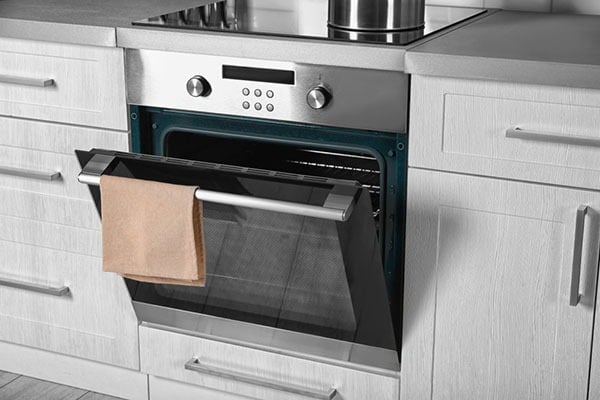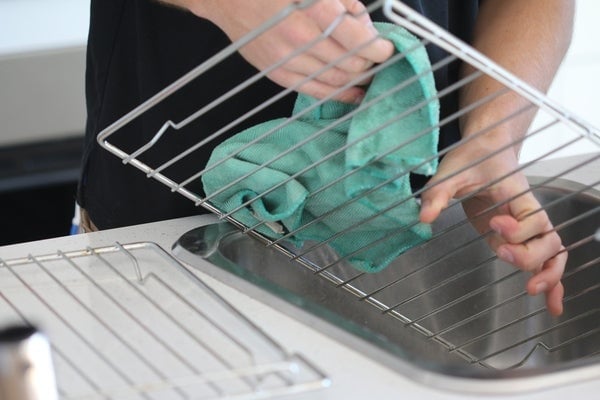How Does a Convection Oven Work — And is it Worth it?

Are convection ovens worth it? We break down how a convection oven works, answer whether anyone really uses it and break down if it can be worth it to you.


Are convection ovens worth it? We break down how a convection oven works, answer whether anyone really uses it and break down if it can be worth it to you.
Whether your home came with a convection oven or you’re in the market for a new oven, you’ve probably wondered what the big “convection” deal is, right? Maybe more importantly, what is a convection oven and how do you use it? Here are some tips on how to cook with a convection oven, as well as an overview of why this type of oven takes the cake (pun intended) when it comes to heating food evenly.
Related: How Does a Self-Cleaning Oven Work?
What is a convection oven?
An oven is an oven is an oven. Or is it? Sure, you're familiar with the fact that ovens heat and cook food. You even know that the heating elements can be gas-powered or electric. But what makes a convection oven different from those other conventional ovens? It all boils down to one thing: A convection oven is a traditional oven that is equipped with an additional heating element and a fan, which makes it stand out from the competition when it comes to the way the food is cooked.
How does a convection oven work?
You know how it feels cooler outside on a windy day than it does on a windless day of the same temperature? That’s because heat transference naturally occurs when air of two different temperatures converge. However, when moving air is added to the mix, that rate of transference is sped up — in this case, you get colder faster with the cool air blowing on you. What does that have to do with convection ovens, you ask? Everything. In fact, its creators used this “wind chill” phenomenon to their advantage. Instead of merely equipping the oven with two heating elements (one on top and one on the bottom), like conventional ovens, they added a third element: that additional heating source with a fan mentioned above. When the hot air from the heating elements is blown around the oven by the fan, the food cooks more quickly and evenly, making the convection oven a hot-ticket item in the cooking world.
How do you know when to use the convection oven setting?
Do you prefer flaky pastry crusts and perfectly roasted meats and vegetables? Being able to evenly cook a large batch of cookies at one time, utilizing all the oven racks? Then there’s no doubt you should use your convection oven setting when making items like these. Because of its efficient cooking abilities, butter releases steam quickly, creating flaky layers, and the skin on meat renders its fat and browns quicker, making the meat all-around juicer (to name a few examples). You shouldn’t use the convection setting, however, when you’re baking “delicate” foods, such as custards, soufflés or cakes with thin batter, as the blowing air can make the batter move around, creating lopsided results.
Thinking about coverage?
Security for your home. Protection for your budget.
What are some tips for using a convection oven?
According to Fine Cooking, when you decide to cook with the convection oven setting, keep the following in mind:
- When following a conventional-oven recipe, heat the convection oven to a temperature 25 degrees lower than the suggested temperature.
- Keep an eye on your food! Convection ovens tend to cook food faster — up to 25 percent faster, in some cases. You may also need to rotate the pans, at times, if you’re utilizing all the racks.
- Use baking pans that have low sides to get the full convection effect.
- If you have an on/off feature, play around with it. For example, if you want a roast that’s well browned but also slowly cooked, only turn the convection feature on at the start or end of the cooking time.
- Use a metal utensil to hold down parchment or foil on your pan, as the fan can sometimes blow them around.
Related: How to Solve Common Oven Problems
Is a convection oven worth it?
The short answer? That depends. If yours is a “true convection” oven, yes. If not, no. (Yes, unfortunately, there are convection impostors out there.) To know if yours is tried and true, verify that it has that third heating element and fan built into the oven. What you don’t want is a fan located on the outside of the oven that blows unheated air into the oven cavity. That will result in hot and cool spots (i.e., uneven cooking), making the main purpose of the convection oven a moot point.
Now that you know the ins and outs of convection oven cooking, you want to make sure your budget is protected if (or when, rather) it breaks down, right? Take a look at how an American Home Shield® Home Oven and Cooktop Home Warranty can help.
Related: Find The Right Oven For Your Kitchen
Do you need help with your Oven? AHS ProConnect offers Oven repair near you.
Learn more about how you can cover your oven and other appliances with a home warranty.

AHS assumes no responsibility, and specifically disclaims all liability, for your use of any and all information contained herein.
Have a plan for your home when things don't go according to plan
Shop Home WarrantiesStaging